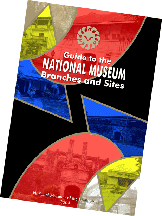BOLINAO BRANCH MUSEUM
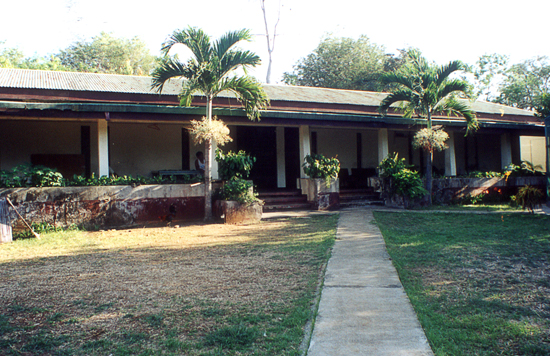
Brief History
The Bolinao branch museum formally opened to the public in 1970 following an excavation by the National Museum that yielded finds of cultural value. Through the support and assistance of the local government which donated the lot for the construction of the building on the 27th of August 1986, the archaeological museum was developed into a showcase of multi-disciplinary exhibits featuring natural history objects and ethnographic materials aside from the archaeological materials collected from towns of Pangasinan.
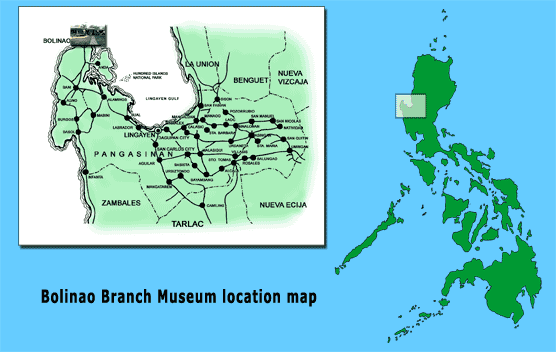
Location
National Museum, Bolinao Branch, Bolinao, Pangasinan
Region I
Category/Type of Museum: General
Collections
Traditional fishing implements: basket traps, fishing nets, wooden paddles, weights made of pottery and wood, bamboo floating lamps, spear guns, scoop net. Bulbous pottery jars used to store bagoong (salted fish).
Baskets for agricultural produce, winnowing trays, sickles, wooden mortar and pestles that depict agricultural technology.
Candleholders, cruets, and a priest’s vest and cape illustrating the influence of the Christian faith among the people of Bolinao.
Artifacts from the Philippine’s Old Stone Age to the Age of Contact: stone tools, fossils, pottery, iron tools, and items from a 14th-15th century burial site.
Metallic and non-metallic minerals.
Diorama of a shallow marine tropical ecosystem.
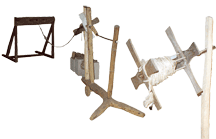
Highlights of Exhibition
Bugtungan is a manual wooden mechanism that is used to make maguey (Agave americana L.) twines into ropes. Maguey rope-making became an industry in Bolinao because of its sandy and limestone environment that is suitable for growing the maguey plant.
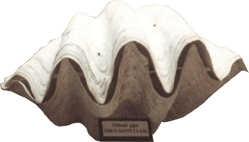
Giant Clams
Largest living bivalves in the world where seven out of the nine species in the world are found in the Philippines.
Fossilized Billfish
Identified as a black marlin Makaira indica, it was found buried under a volcanic ash deposit on Tambac Island, Bolinao, Pangasinan. It is the first fossil billfish described from Asia as the first living species of billfish positively identified in the fossil records.
Location, Museum Hours & Contact No.
National Museum, Bolinao Branch, Bolinao, PangasinanBy land. Victory Liner, Five Star and Philippine Rabbit are a few of buses that regularly ply to the place. Travel takes about five to six hours from Manila. Pangasinan has an extensive network of good roads.
Mondays-Fridays / 9:00 am - 4:00 pm;
Saturdays, Sundays and holidays by appointment
Contact No. (075) 554-2065
ASBMD, National Museum Central Office; 527-4192
taken from the
